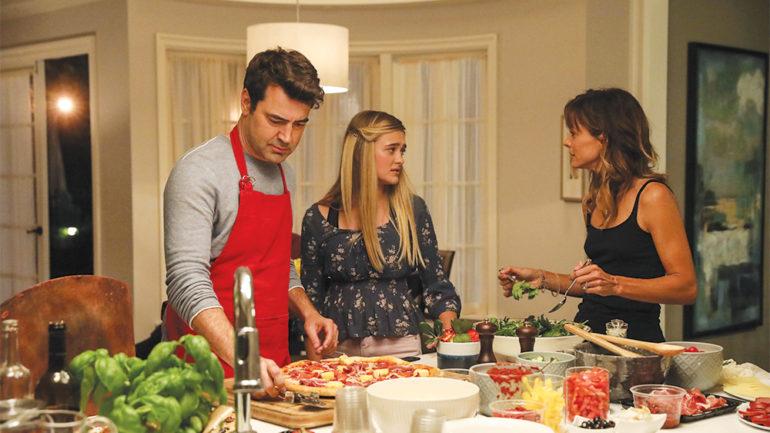How Food Stylists Find the Right Recipe for TV Show Meals
By Randee Dawn
LOS ANGELES (Variety.com) – Tamara Reynolds’ first gig as a food stylist was no small job. Tasked with creating around 200 plates that, as she recalls, “would look Wolfgang Puck-y” for a wedding scene on the now-defunct USA Network series “Royal Pains,” her dishes included red kale and a zucchini cup filled with mashed potatoes and topped with cherry tomatoes. So far, so delicious.
“It was tall and colorful and looked great,” she says. “And it was sitting out all day in the summertime, when it was hot as balls.” Late in the day, an extra ate the potatoes and … well, the result wasn’t pretty.
“Trial by fire,” says Reynolds. “Welcome to food styling.”
Food stylist, one of the lesser-known below-the-line categories on a film or TV set, can be critical to setting the scene for both actors and viewers. Foods must be edible, presentable, replicable, historically accurate and able to meet key cast food allergy requirements, all while satisfying both script and director.
“People assume the food is plastic or fake,” says JoDee Hayes, food stylist on ABC’s dramedy series “A Million Little Things.” “The food is definitely real — I’m not playing around with anything that can’t be eaten. But you never know what’s going to happen.”
For example, in one episode, Hayes arrived on the “Million” set with an approved 10-inch vegan pizza, only to find that the director now preferred a 14-inch version. She had to improvise. “No matter how prepared you come for a scene, you have to be thinking on as many different levels as you can to give the director what they want,” she says.
The process begins when scripts, which may be very specific or very general about food in a particular scene, pass from the property master to the stylist, who often speaks with set dressers as well. Instructed to prepare for a luau scene on a recent episode of ABC’s “Black-ish,” stylist Trish Reilly began brainstorming.
“The first images you think of are of beautifully colored food,” she says. “You have to talk with set dressing, because we have all of these plates to fill up, all of these tables. You don’t want anything to look empty; it’s eye candy.”
And in the case of the luau, it required a suckling pig. Despite the fact that it was a three-day shoot, Reilly says they had to roast only a single 35-pound pig. The secret: It wasn’t cooked all the way through. “It had to hold on the spit all that time, and therefore was not edible.”
Food must also fit the period, as Reynolds learned while working on FX miniseries “Fosse/Verdon,” which started off with a 1969 soiree. Reynolds and her team decided on cheese molds for period accuracy, but then realized they had to be both edible and able to survive under hot TV lights. In the series’ third episode, set in 1942, she had to prepare hors d’oeuvres with ingredients a middle-class family would have had during the period of World War II rationing.
But food is just another prop to stylists — so it can be made to be ruined, thrown out or thrown around. For Amazon Video’s thriller series “Homecoming,” stylist Melissa McSorley created chicken entrails for a scene where one character’s boss is shown cleaning a chicken and tossing the guts to his employee. But real innards would spoil, so she created some with sausage casing, scrambled eggs and dyed Asian noodles.
Quite a lot of the food gets tossed away even when it is edible, though. “For two people eating a plate of pasta and a salad and dinner roll, we might go through four dozen rolls and 10 pounds of pasta,” says McSorley. “If you see a plate being served and they take a bite, you have to be prepared to replace that same dish in front of them maybe 24 times.”
And the devil often lies in the details: Stylists know to avoid parsley, pepper or other add-ons that might linger in actors’ teeth; they know potatoes are versatile and can stand in for less-durable edibles; and they’re conscious of food scents — fennel tends to substitute for raw onions.
“In close proximity, you have to be aware of things that can be smelly,” notes Hayes.
In the end, it’s not just about providing a prop that’s comestible; it’s about contributing to the entire mise-en-scène. “I remember watching ‘Mad Men’ and ‘Hannibal,’ and in those cases every single element — food, costume, every room they were in — was so of the world they created,” recalls Reynolds. “I want to be that good. Even if it’s all left on the cutting room floor, I want that little bit I contribute to the scene to be visually memorable.”

